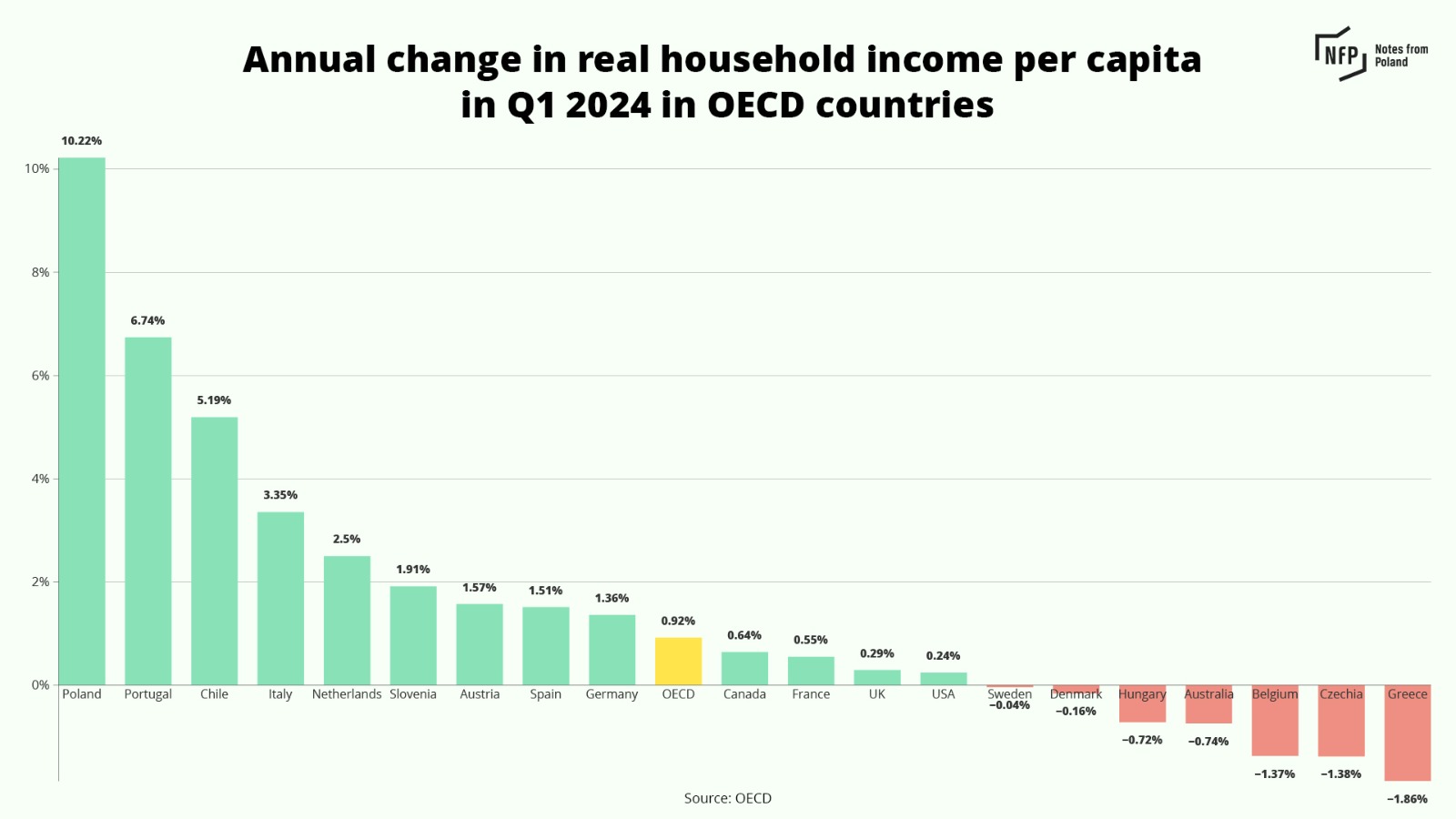Poland saw the OECD’s largest annual increase in real household income per capita, a key indicator of economic prosperity, in the first quarter of 2024, newly published data from the organisation show.
Poland was the only country to record a double-digit increase (10.22%) and was well above the OECD average of 0.92% for the 20 countries included in the data. The next largest increases were in Portugal (6.74%) and Chile (5.19%).
At the other end of the scale, seven countries saw a fall in real household income per capita, with the largest declines in Greece (-1.86%), the Czech Republic (-1.38%) and Belgium (-1.37%).

Real household income per capita shows the resources households have at their disposal to buy goods and services or to save for future expenses.
Poland’s rise was driven mainly by increases in compensation of employees, social benefits other than social transfers in kind, and property income, which has more than tripled in the country since the end of 2021 due to interest rate increases, notes the OECD.
Wage growth in Poland has been driven this year by a record rise in the minimum wage – a policy introduced by the former government – and a 20% pay raise for all state employees and 30% rise for teachers enacted by the new government that took office in December.
Sorry to interrupt your reading. The article continues below.

Notes from Poland is run by a small editorial team and published by an independent, non-profit foundation that is funded through donations from our readers. We cannot do what we do without your support.
In February, real wage growth, i.e. wage growth adjusted for inflation, in Poland was the highest in 16 years. In the second quarter, wages grew at the fastest rate in more than at least 20 years.
Poland’s unemmployment rate also in June fell below 5% for the first time since the start of the post-communist transition in 1990.
Household incomes in Poland have been supported by the high interest rates maintained by the central bank since 2022, as they are linked to higher interest rates on accumulated savings.
The average wage in Poland rose by an annual 14.7% in the second quarter of 2024 – the largest increase in at least two decades – to reach 8,038 zloty (€1,865) per month
Growth has been driven by a record minimum wage hike and public sector pay increases https://t.co/iB0uO2FD9c
— Notes from Poland 🇵🇱 (@notesfrompoland) August 11, 2024
Main image credit: Jakub Żerdzicki/Unsplash

Alicja Ptak is deputy editor-in-chief of Notes from Poland and a multimedia journalist. She has written for Clean Energy Wire and The Times, and she hosts her own podcast, The Warsaw Wire, on Poland’s economy and energy sector. She previously worked for Reuters.



















